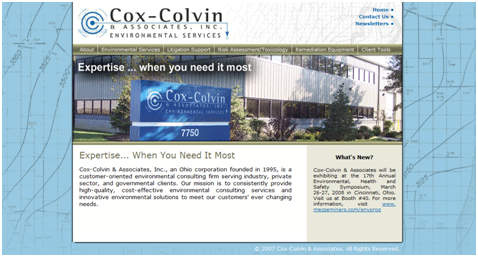Fecal indicator bacteria contamination is a common problem for many surface-water bodies and drinking water systems. The Clean Water Act was passed in 1972, yet about 13% of US surface waters still don't meet water quality standards. This is due in part to fecal material intruding our waterways from various point and non-point sources. Traditional fecal indicator bacteria analyses can't differentiate contaminant sources;h owever, new molecular identification tools are showing promise in this area.
Read More>>
Tuesday, December 11, 2012
Thursday, December 6, 2012
EPA's Final VI Guidance
EPA's Office of Solid Waste and Emergency Response (OSWER) has long promised the release of the Final VI Guidance (FVIG) on November 30, 2012, exactly 10 years after issuing the draft guidance. We've learned that the draft guidance was sent to EPA's regional offices for review. We have a copy and will report on it in our December Focus on the Environment Newsletter. OSWER's Richard Kapuscinski recently said that the FIVG would not be complete by the end of November, but we understand that it's expected in the second quarter of 2013, following a presentation at the Association for Environmental Health and Sciences (AEHS) VI conference in March. Craig Cox of Cox-Colvin will be presenting at the conference regarding the issues of spatial heterogeneity. We'll keep you informed on the FVIG and the AEHS conference in future issues of our newsletter.
Labels:
vapor intrusion,
vapor intrusion guidance,
VI
Tuesday, December 4, 2012
Public Water Systems: Considerations for Providing Water for Oil and Gas Drilling
Water is a critical component in the drilling and development of oil and gas resources in Ohio and surrounding states. Clean water, like energy, also is a resource vital to our existence. In some areas of Ohio, oil and gas companies are turning to public water systems to provide the source of water for hydraulic fracturing. For many municipalities within the shale gas play, this can be a welcome revenue source. However, there are a number of issues which should be considered by both the public water supply and the oil and gas company prior to supplying the water.
Read More>>
Read More>>
Subscribe to:
Posts (Atom)




